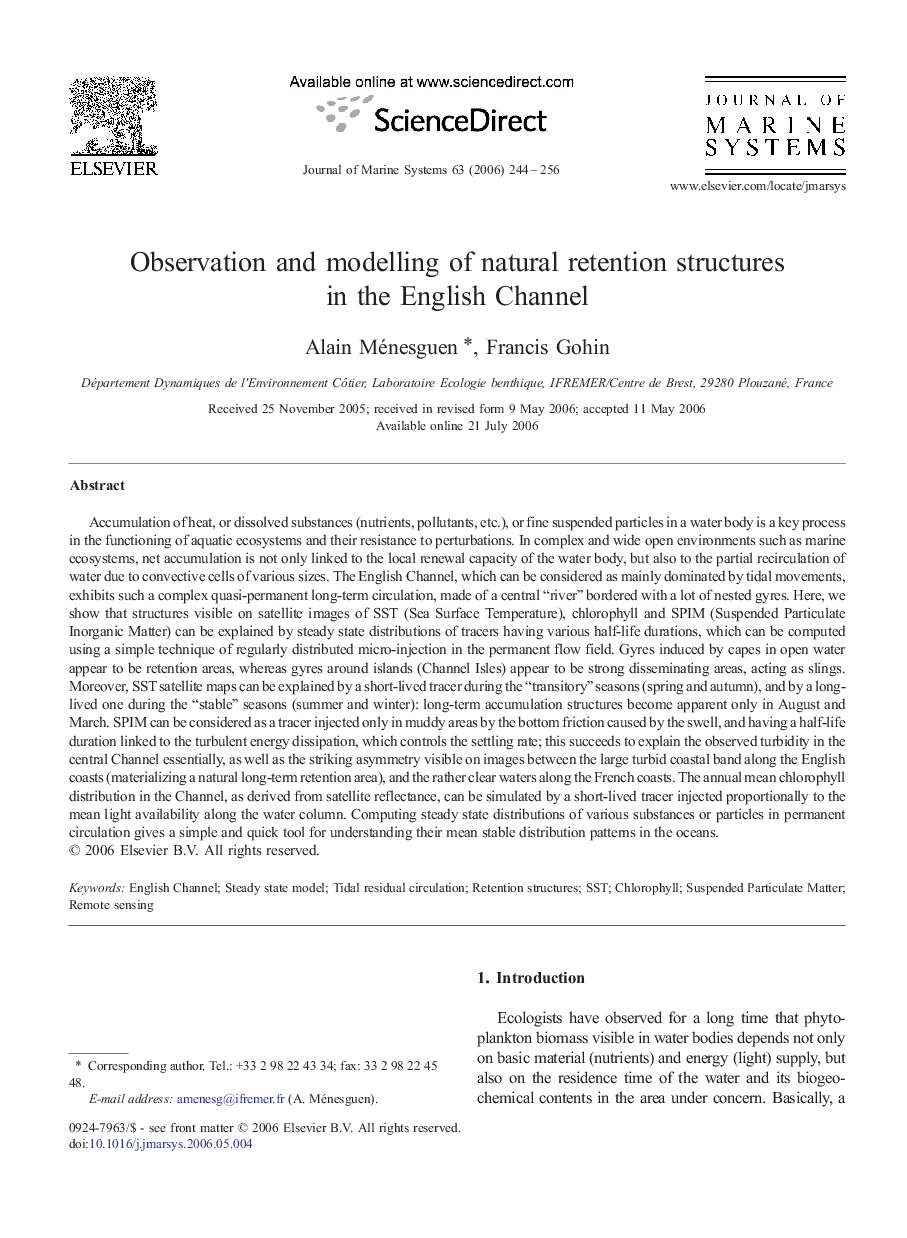| کد مقاله | کد نشریه | سال انتشار | مقاله انگلیسی | نسخه تمام متن |
|---|---|---|---|---|
| 4549244 | 1627360 | 2006 | 13 صفحه PDF | دانلود رایگان |

Accumulation of heat, or dissolved substances (nutrients, pollutants, etc.), or fine suspended particles in a water body is a key process in the functioning of aquatic ecosystems and their resistance to perturbations. In complex and wide open environments such as marine ecosystems, net accumulation is not only linked to the local renewal capacity of the water body, but also to the partial recirculation of water due to convective cells of various sizes. The English Channel, which can be considered as mainly dominated by tidal movements, exhibits such a complex quasi-permanent long-term circulation, made of a central “river” bordered with a lot of nested gyres. Here, we show that structures visible on satellite images of SST (Sea Surface Temperature), chlorophyll and SPIM (Suspended Particulate Inorganic Matter) can be explained by steady state distributions of tracers having various half-life durations, which can be computed using a simple technique of regularly distributed micro-injection in the permanent flow field. Gyres induced by capes in open water appear to be retention areas, whereas gyres around islands (Channel Isles) appear to be strong disseminating areas, acting as slings. Moreover, SST satellite maps can be explained by a short-lived tracer during the “transitory” seasons (spring and autumn), and by a long-lived one during the “stable” seasons (summer and winter): long-term accumulation structures become apparent only in August and March. SPIM can be considered as a tracer injected only in muddy areas by the bottom friction caused by the swell, and having a half-life duration linked to the turbulent energy dissipation, which controls the settling rate; this succeeds to explain the observed turbidity in the central Channel essentially, as well as the striking asymmetry visible on images between the large turbid coastal band along the English coasts (materializing a natural long-term retention area), and the rather clear waters along the French coasts. The annual mean chlorophyll distribution in the Channel, as derived from satellite reflectance, can be simulated by a short-lived tracer injected proportionally to the mean light availability along the water column. Computing steady state distributions of various substances or particles in permanent circulation gives a simple and quick tool for understanding their mean stable distribution patterns in the oceans.
Journal: Journal of Marine Systems - Volume 63, Issues 3–4, December 2006, Pages 244–256